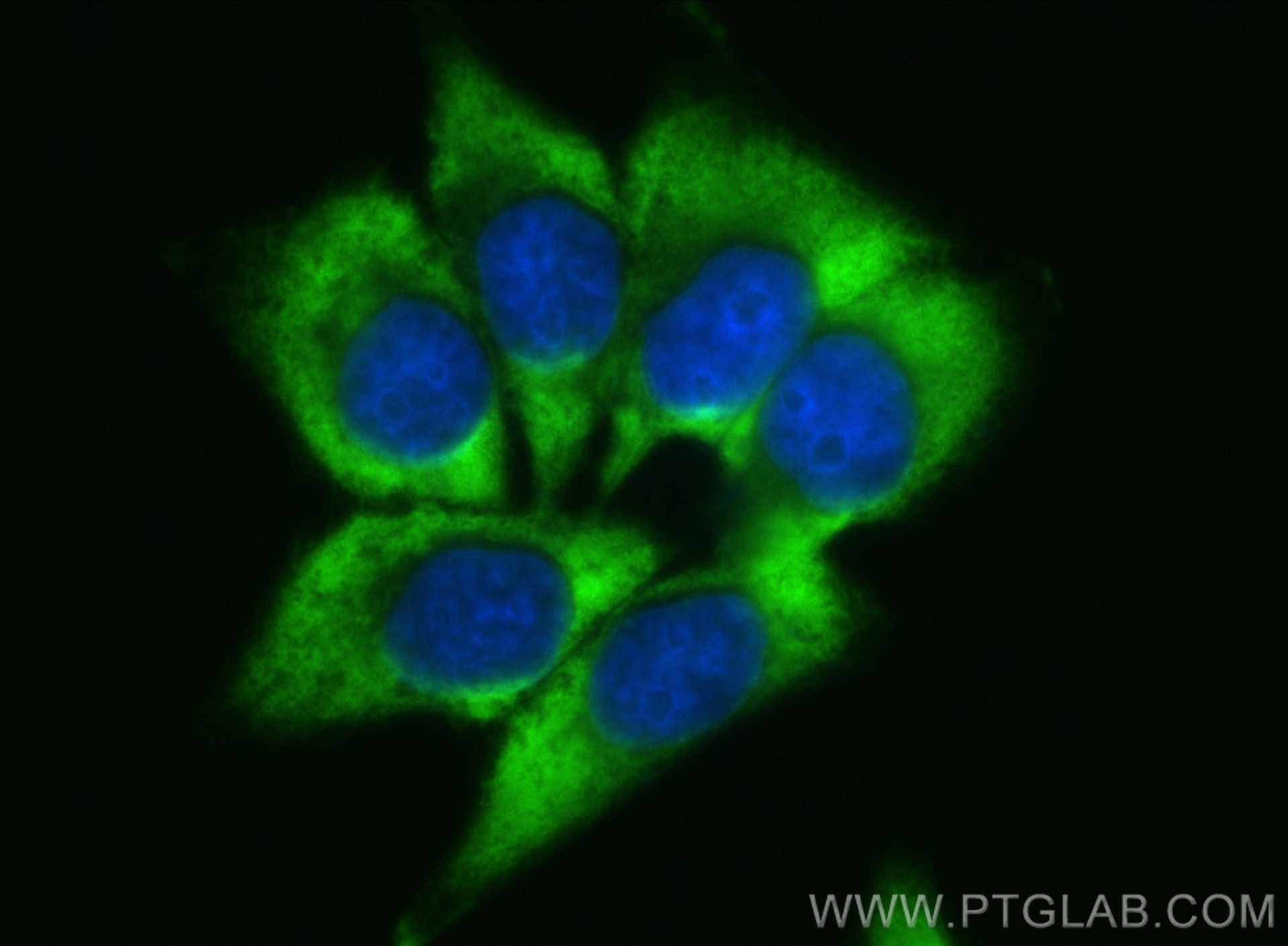Tested Applications
| Positive IF/ICC detected in | HepG2 cells |
Recommended dilution
| Application | Dilution |
|---|---|
| Immunofluorescence (IF)/ICC | IF/ICC : 1:50-1:500 |
| It is recommended that this reagent should be titrated in each testing system to obtain optimal results. | |
| Sample-dependent, Check data in validation data gallery. | |
Product Information
CL488-82927 targets CYP7B1 in IF/ICC applications and shows reactivity with human samples.
| Tested Reactivity | human |
| Host / Isotype | Rabbit / IgG |
| Class | Recombinant |
| Type | Antibody |
| Immunogen | CYP7B1 fusion protein Ag19374 Predict reactive species |
| Full Name | cytochrome P450, family 7, subfamily B, polypeptide 1 |
| Calculated Molecular Weight | 506 aa, 58 kDa |
| Observed Molecular Weight | 50-55 kDa |
| GenBank Accession Number | BC136574 |
| Gene Symbol | CYP7B1 |
| Gene ID (NCBI) | 9420 |
| RRID | AB_3673120 |
| Conjugate | CoraLite® Plus 488 Fluorescent Dye |
| Excitation/Emission Maxima Wavelengths | 493 nm / 522 nm |
| Form | Liquid |
| Purification Method | Protein A purification |
| UNIPROT ID | O75881 |
| Storage Buffer | PBS with 50% Glycerol, 0.05% Proclin300, 0.5% BSA, pH 7.3. |
| Storage Conditions | Store at -20°C. Avoid exposure to light. Stable for one year after shipment. Aliquoting is unnecessary for -20oC storage. |
Background Information
CYP7B1(Cytochrome P450 7B1) is also named as 25-hydroxycholesterol 7-alpha-hydroxylase and belongs to the cytochrome P450 family. It catalyzes the first and rate-limiting step in the coonversion of cholesterol to bile acids and CYP7B1-mediated catalysis may play a role for control of the cellular levels of androgens, not only of estrogens.
Protocols
| Product Specific Protocols | |
|---|---|
| IF protocol for CL Plus 488 CYP7B1 antibody CL488-82927 | Download protocol |
| Standard Protocols | |
|---|---|
| Click here to view our Standard Protocols |



